I consider myself pretty lucky to live within a 4-hour drive of one of the Seven Natural Wonders of the world. As an avid backpacker and photographer, it troubled me when I realized I had somehow allowed over a year to elapse since my last visit to Grand Canyon National Park. So back in February, I filled out my paper application for a wilderness permit and faxed (yes, this is a government agency we’re dealing with) it to the Backcountry Office in Flagstaff. I got a follow up call two weeks later from a kind ranger who informed me that both the routes I had applied for were currently buried under several feet of snow. For those readers elsewhere in the world, the western and southwestern United States received record-breaking precipitation this past winter. Furthermore, I was unaware that the access to the South Bass trailhead, one of my two requested routes, still had not been reopened since the pandemic because accessing it requires traversing tribal land. So I decided to push the trip back by six weeks into late April when the snow would be melted at the canyon rim. After some back-and-forth with the ranger on the phone, I settled on a trip down to Horseshoe Mesa starting from Grandview Point. From there I could set up a base camp and day-hike down Cottonwood Canyon or Hance Creek Canyon, both side-canyon offshoots of the main canyon, and worthy hiking objectives in their own right.
Fast-forward and my wife and I were setting off down the Grandview Trail with heavy packs full of 3 days worth of supplies, and mine with my 4×5 field camera kit. I also had my Nikon FE and Nikkor 28mm f/2 around my neck. I brought an A12 orange filter that I dug out of a drawer and that I had never used before. I think it came from an old camera “lot” that I had ebay’ed years ago. But I am a sucker for my Lee red filter on my 4×5, so I thought I’d try it out on this trip where I knew the skies would be clear and open all weekend.
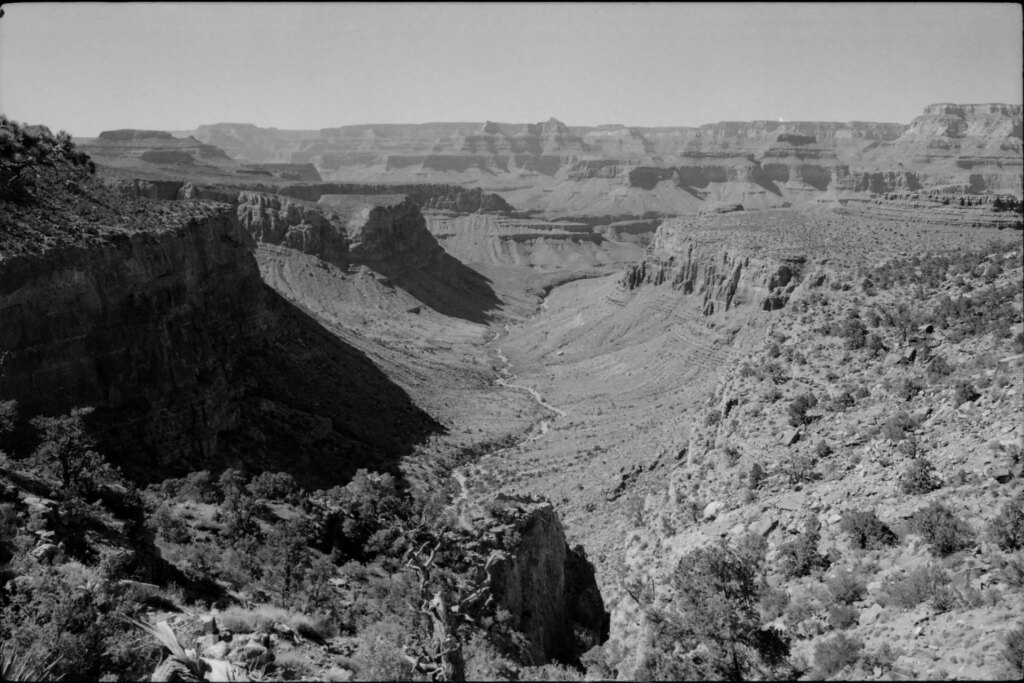
The following morning I awoke very early on top of Horseshoe Mesa as the sun came long and low across the canyon, backlighting all the layered ridges and tributary canyons to the east. From my campsite, there were nearly 180-degree unobstructed views. I set up the field camera but ended up not making any exposures and instead just watching the light move across the landscape for awhile. In honesty I always find difficulty photographing the Grand Canyon. It is just so immense, and I struggle to take decent photos that really convey that vastness. It’s so easy there to take a photo that loses all context of scale in the endless layers and open landscape in all directions. On this trip I was happy to have a 35mm camera with me to be able to take simple snapshots for myself to remember the trip by:
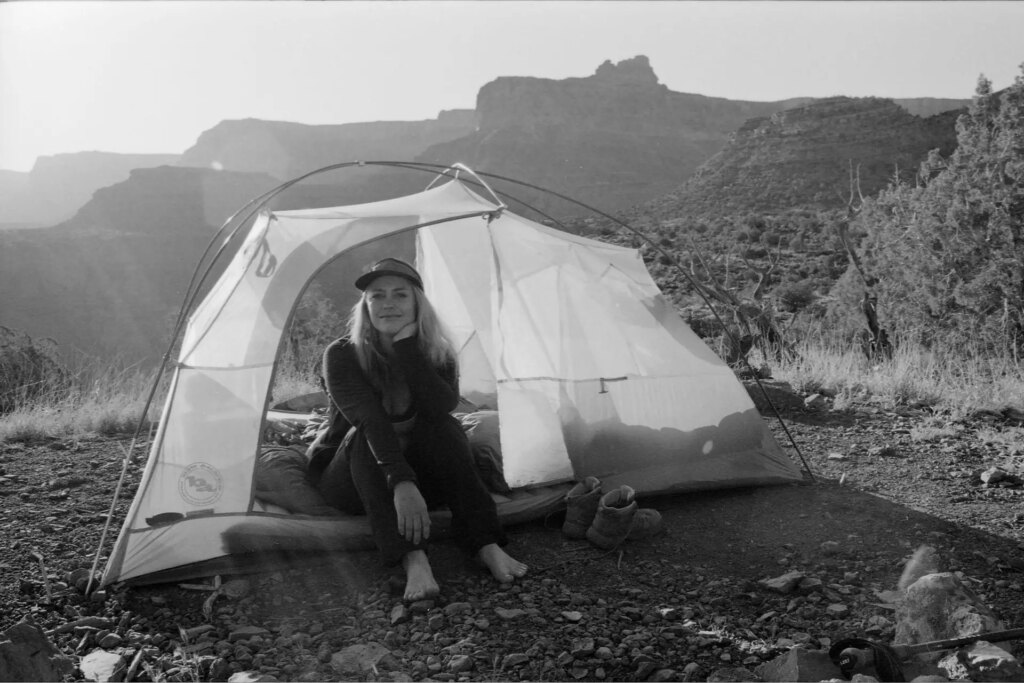
The two of us donned our day packs and set off down the steep trail into Cottonwood Canyon. The wet winter had turned the canyon at mid-elevation into an Eden of wildflowers. I saw lots of orange Globe Mallow and white Cliffrose in full glorious bloom. Beautiful lilac-colored Mariposa Lilies formed blankets in the flatter and sunnier areas. The first section of Cottonwood Canyon is a dry wash that only flows after heavy rain. Cottonwood Spring flows into the wash after about a mile or so, and from that point on I was hiking stream-side through a lush riparian corridor shaded by tall cottonwood trees that give the canyon and the creek their names.
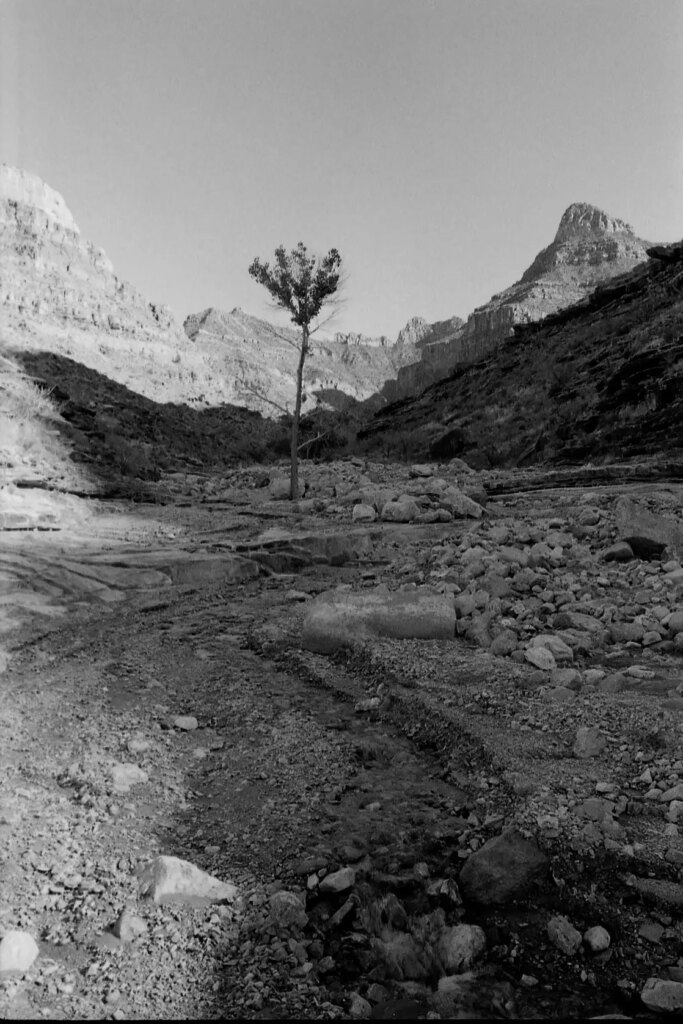
The water and shade provided a great spot to wait out the dangerously hot afternoon. I kept hiking down the canyon, eventually turning to a scramble, and after that to the top of an 80-foot sheer drop that marked the end of my downstream progress. I made two exposures with my field camera that I hope to share in a future post. Hiking back up late in the day, the wash was cloaked in the long shadows of the canyon walls, but the taller summits up closer to the rim were still sunlit. I shot many frames on my FE walking back up to our campsite. This is my favorite:
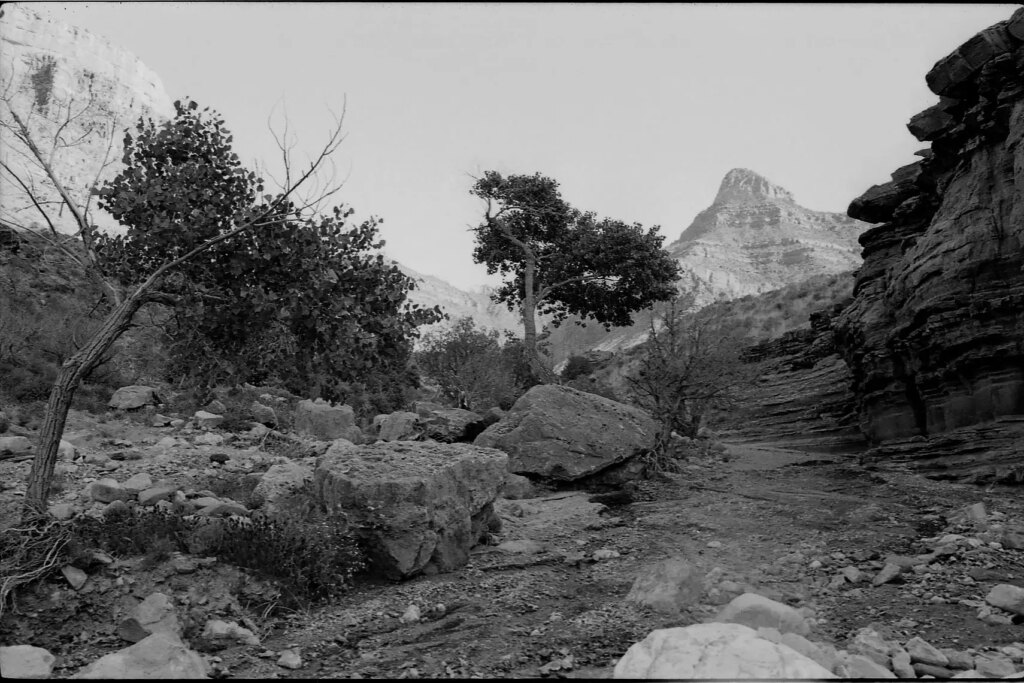
The next day I hiked back up to the trailhead at the canyon rim. I always love the hike uphill because around every switchback you get a slightly different frame of a worn trail leading up into the scene with foreground on one side and an endless expanse on the other. Sometimes the trail is hewn right out of the cliffside. I am always amazed by the imagination and engineering it must have taken the CCC trail crews when they constructed these impossible routes into such an impenetrable place. I took a photo of a juniper tree growing straight out of the side of the cliff alongside the path.
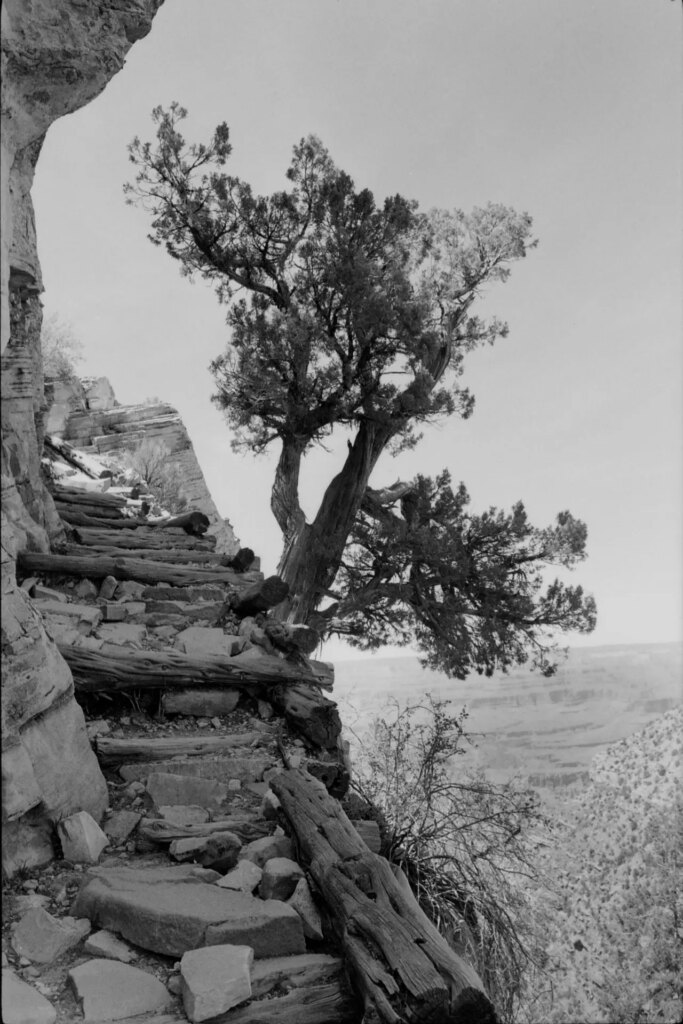
I’m not sure how or why, but I came out of the canyon with 4 frames still left on my roll. They all got used when I stopped for lunch on the drive back home.
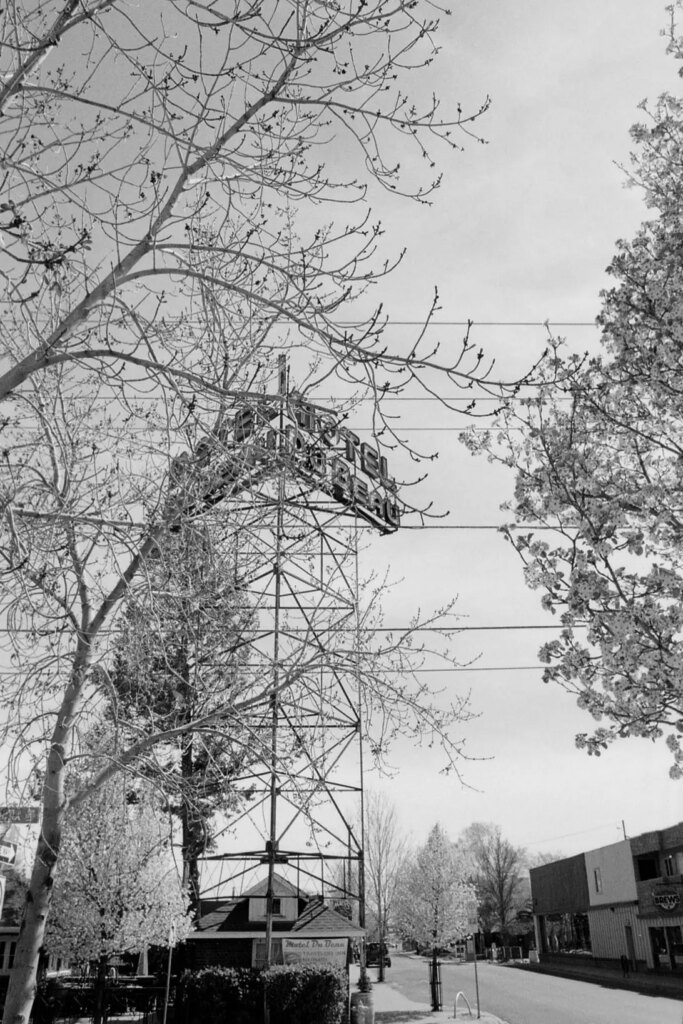
Thank you for reading this far. You can find a mixture of my large format work and digital work here: samcarl.com/landscape.
I’m also on instagram instagram.com/samcarl.photo
Share this post:
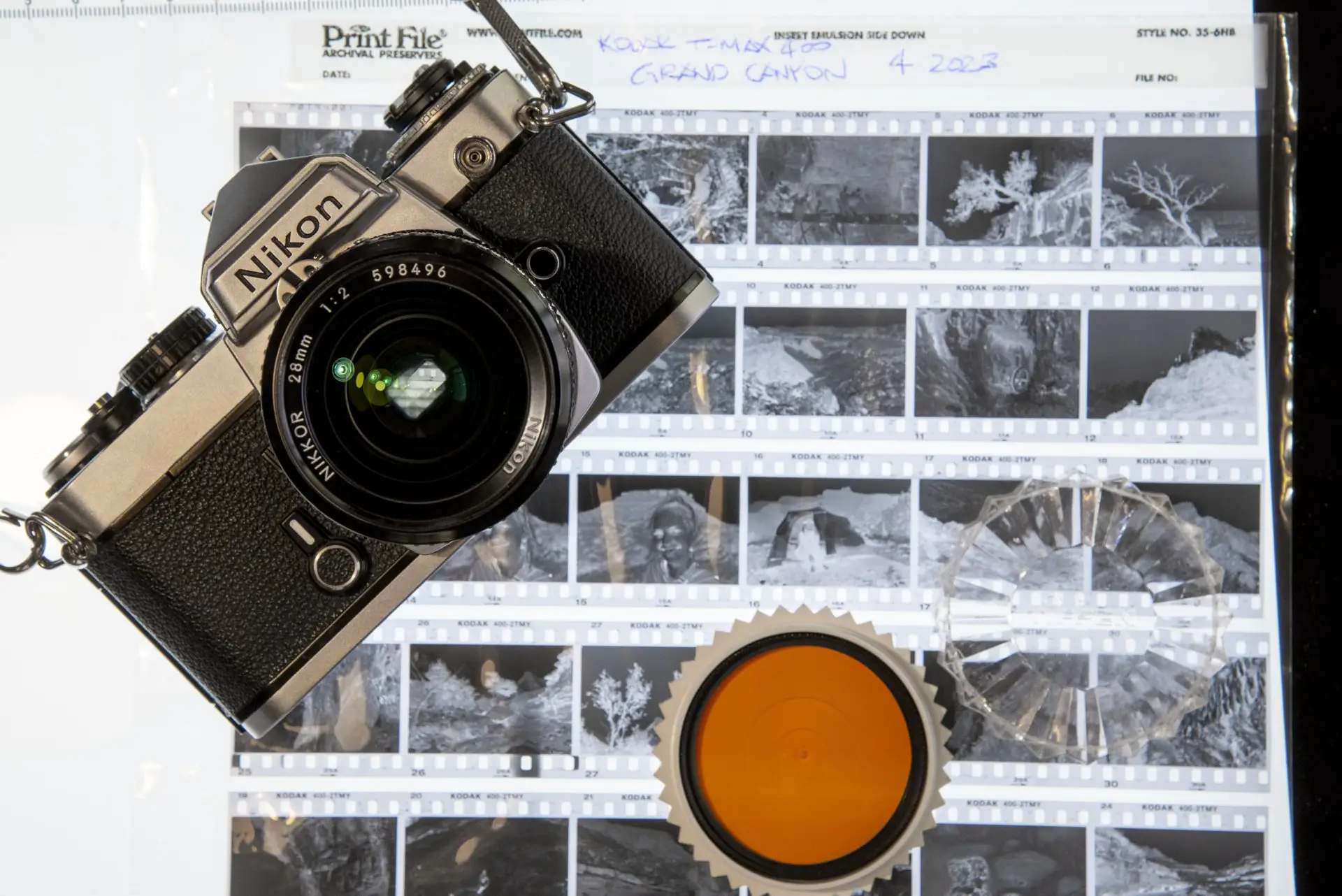
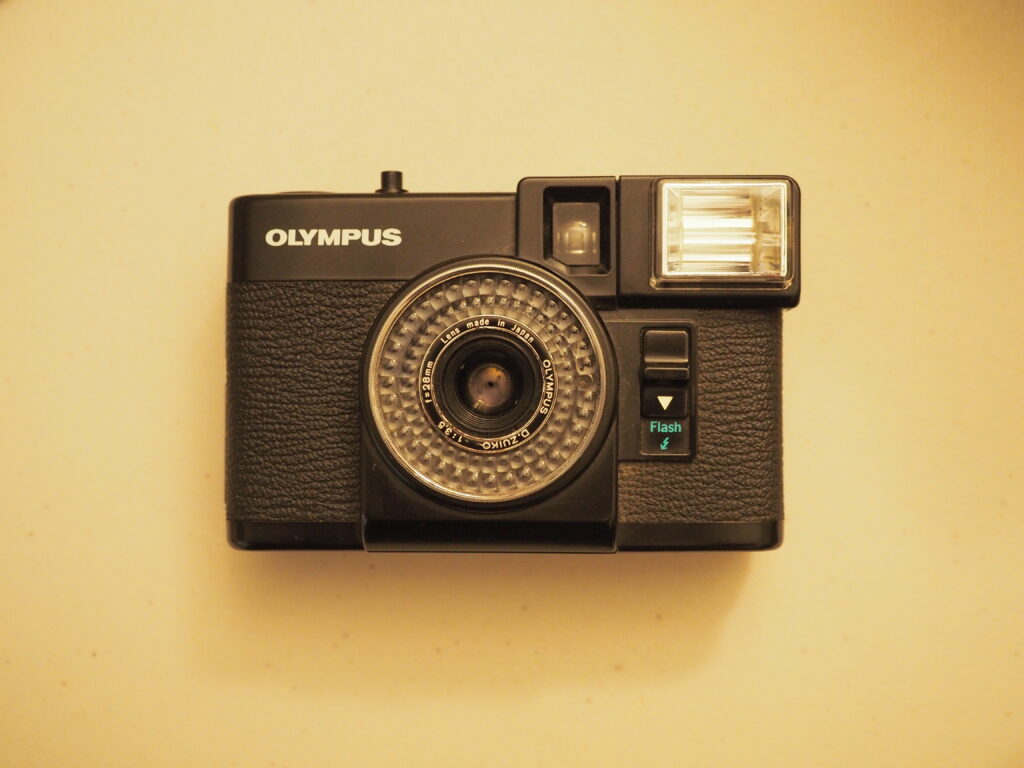
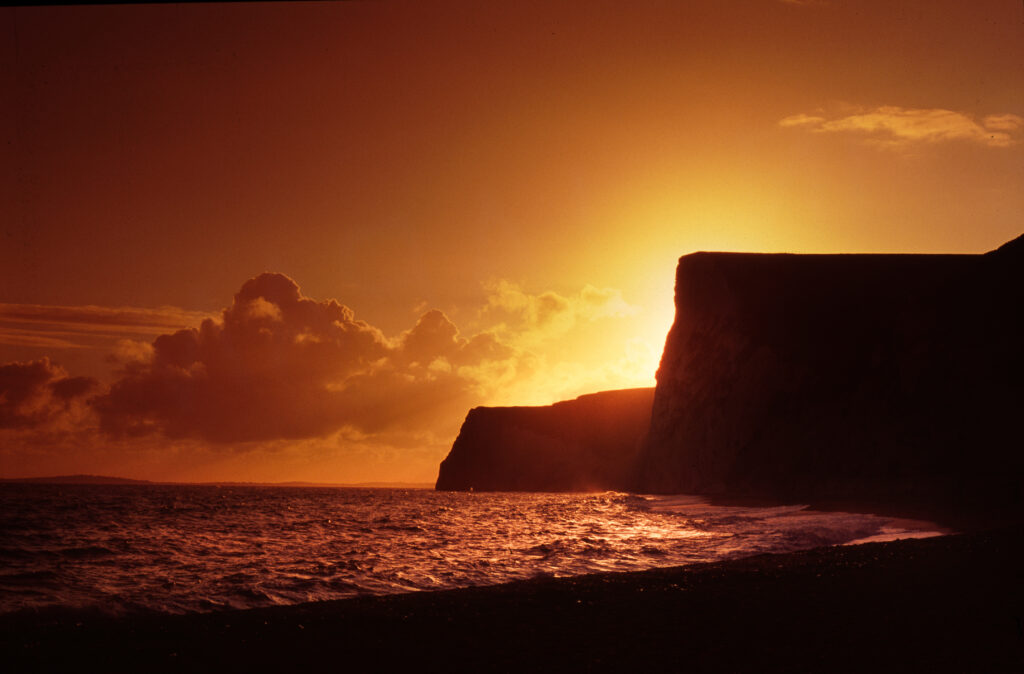
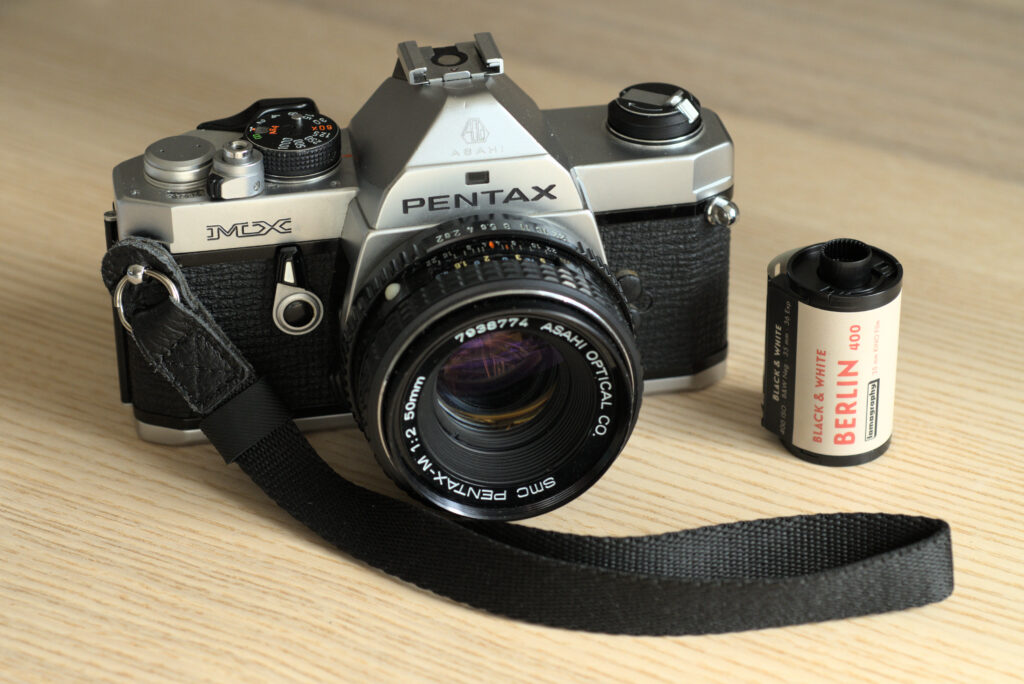
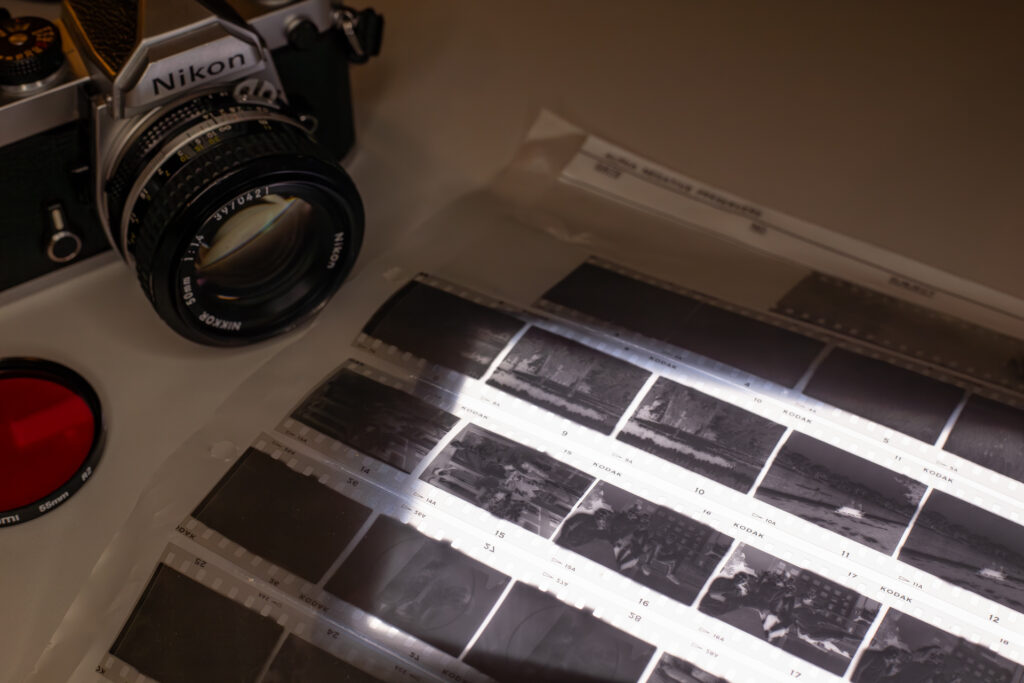




Comments
David on 5 Frames in the Grand Canyon with an Nikon FE, T-Max 400, and an Orange Filter
Comment posted: 15/07/2023
Comment posted: 15/07/2023
Alasdair Mackintosh on 5 Frames in the Grand Canyon with an Nikon FE, T-Max 400, and an Orange Filter
Comment posted: 15/07/2023
Then I read about the route you were taking and the distances you were going, and I thought: "OK, I can see why you'd only want a lightweight 35mm camera and a single lens."
And *then* I read that you were taking a 4x5 as well ;-) I am very impressed. (I've done a few gentle "hikes" with LF and MF cameras, but nothing like yours.) Would love to see some of the LF exposures you made.
Regarding the difficulty of capturing the scale of the Grand Canyon, I know exactly what you mean. I've been there as well, and had the same issue. I think your approach of capturing smaller details, or more intimate views, works really well. I particularly like the juniper tree on the side of the slope, which has a vista in the background, and a fascinating shape in the foreground. I think it's also an image in which the 3:2 35mm aspect ratio works better than the more square 4:5 ratio.
Great article!
Comment posted: 15/07/2023
Comment posted: 15/07/2023
Lance on 5 Frames in the Grand Canyon with an Nikon FE, T-Max 400, and an Orange Filter
Comment posted: 15/07/2023
Comment posted: 15/07/2023
Dave Powell on 5 Frames in the Grand Canyon with an Nikon FE, T-Max 400, and an Orange Filter
Comment posted: 15/07/2023
Dave
Comment posted: 15/07/2023
Comment posted: 15/07/2023
Comment posted: 15/07/2023
Arthur on 5 Frames in the Grand Canyon with an Nikon FE, T-Max 400, and an Orange Filter
Comment posted: 16/07/2023
Comment posted: 16/07/2023